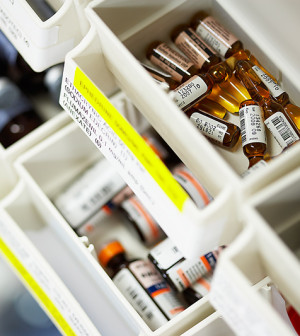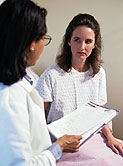- Navigating Your Midlife Crisis: Embracing New Possibilities
- City Raccoons Showing Signs of Domestication
- Mapping the Exposome: Science Broadens Focus to Environmental Disease Triggers
- One Week Less on Social Media Linked to Better Mental Health
- Your Brain Changes in Stages as You Age, Study Finds
- Some Suicide Victims Show No Typical Warning Signs, Study Finds
- ByHeart Formula Faces Lawsuits After Babies Sickened With Botulism
- Switch to Vegan Diet Could Cut Your Greenhouse Gas Emissions in Half
- Regular Bedtime Does Wonders for Blood Pressure
- Dining Alone Could Mean Worse Nutrition for Seniors
How to Do Breast Self-Exams


Breast self-exams that might help detect breast cancer should be done once a month, a doctor recommends.
Women should do the self-exams about seven to 10 days from the beginning of their menstrual cycle, or about the same time each month if they no longer have periods, advised Dr. Magdalena Lombardi Plasilova, director of breast health services at Brookdale Hospital and Medical Center in New York City.
“Being a woman is the single greatest risk for breast cancer, so we must do everything we can to prevent becoming a statistic,” Plasilova said in a hospital news release.
“We need to educate ourselves, our daughters, our sisters and our neighbors. It is essential for women to self-check, schedule regular screenings, and live a healthy lifestyle,” she added.
Start the self-exam by removing your clothing and standing in front of a mirror. Look for any changes in the size, shape or color of your breasts, and any changes to the skin and nipples, such as sores, dimples or redness, she said.
Check all angles of your breasts by lifting and looking underneath them, as well as from the side. Put your hands over your head and repeat the process of checking all angles, Plasilova said.
Next, lie on the floor and feel each breast with the opposite hand, using a firm touch and a circular motion. Keep your fingers together and flat, not pointed. Do the same thing while standing, she said.
Pull your nipples forward and check for fluid or discharge.
If your self-exam detects anything unusual, call your doctor, Plasilova said.
It’s also important to get regular breast cancer screenings. Ask your doctor what type of screening you require and how often based on your individual risk. Learn your family history of breast cancer, she recommended.
More information
The American Cancer Society has more about breast self-exams.
Source: HealthDay
Copyright © 2025 HealthDay. All rights reserved.










